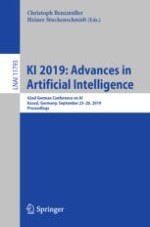2019 | Buch
KI 2019: Advances in Artificial Intelligence
42nd German Conference on AI, Kassel, Germany, September 23–26, 2019, Proceedings
herausgegeben von: Christoph Benzmüller, Heiner Stuckenschmidt
Verlag: Springer International Publishing
Buchreihe : Lecture Notes in Computer Science
